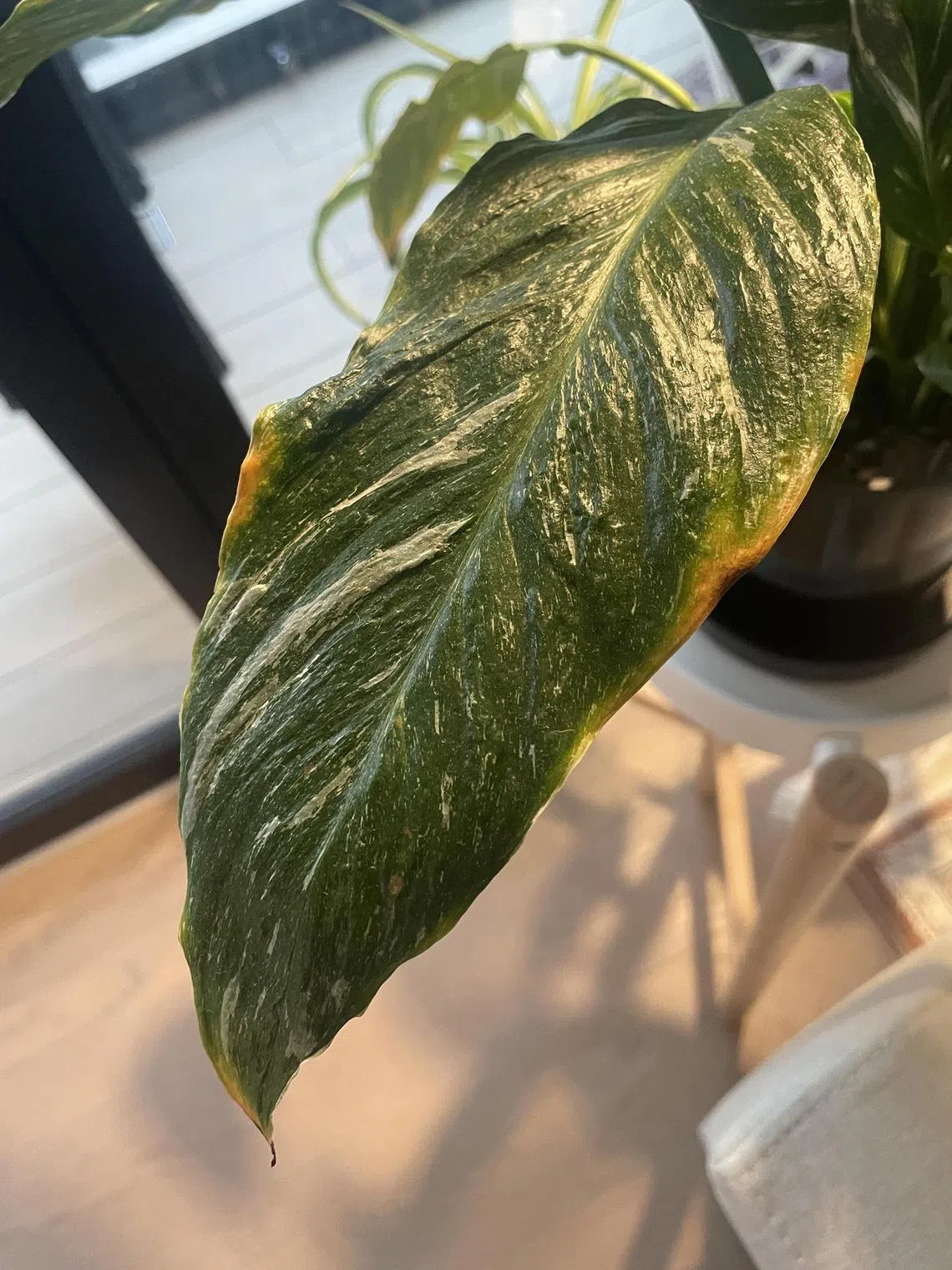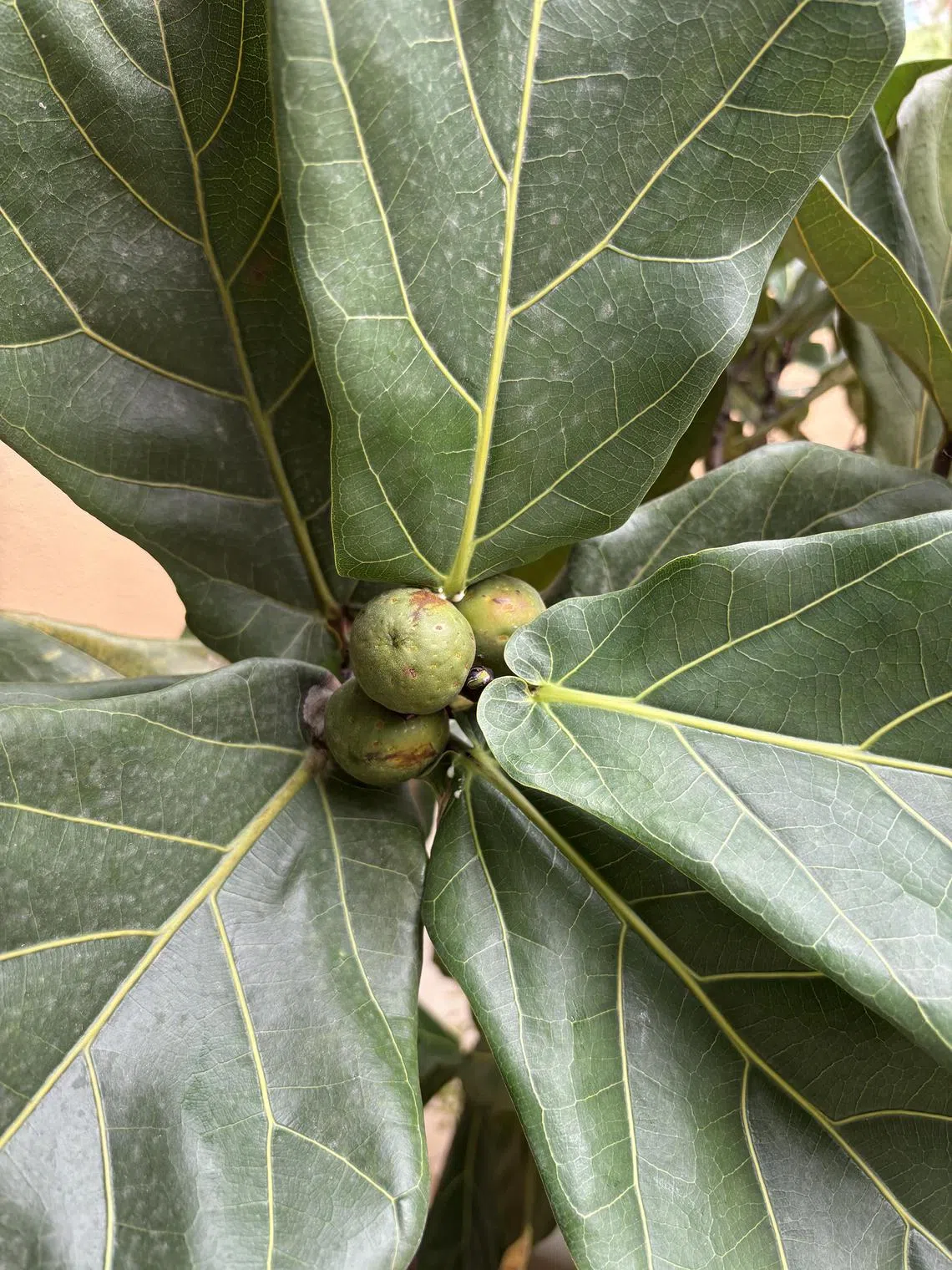Root Awakening: Inspect okra plant regularly for fungal disease
Sign up now: Get ST's newsletters delivered to your inbox

Common issues for okra plants include mildew, leaf hoppers, whiteflies and aphids.
PHOTO: ADRIAN LING
Wilson Wong
Follow topic:
Inspect okra plant for pests
What is wrong with this okra plant?
Adrian Ling
Your plant seems to have a fungal disease. Common issues for okra plants include mildew, leaf hoppers, whiteflies and aphids. The sap-sucking pests can spread incurable viral diseases.
Inspect your plants regularly and take appropriate remedial action, such as spraying pesticides and fungicides. Lime sulphur and potassium bicarbonate may provide control for fungal disease, while summer oil and pyrethrins are suitable for addressing pest infestations.
The okra is an annual plant, meaning it will produce fruit and subsequently lose vigour and productivity with age. It is often removed at the end of a crop cycle.
Grow Purple Heart under good light

Purple Heart needs to be grown under direct or filtered sunlight for at least six hours daily.
PHOTO: GLORIA ANG
What is this plant? It does not seem to be growing and the tiny flowers fall off after a while, without having grown any bigger. Is this normal?
Gloria Ang
This plant is the Purple Heart and its botanical name is Tradescantia pallida. It needs to be grown under direct or filtered sunlight for at least six hours daily. The lack of sunlight will cause the plant to elongate and lose colour in its leaves.
It needs well-draining soil as well. Check that the plant has developed a healthy root system, as a poorly developed one can lead to a lack of growth. A plant grown in moisture-retentive soil and kept in the shade will develop rotten roots and stems.
Peace Lily may be suffering from nutrient issues

Reduce the fertiliser given to the Peace Lily and flush the soil with plain water.
PHOTO: DIANE YEO
My Peace Lily is putting out many new leaves, but the older ones are turning yellow at the edges and some of their tips have turned black. I give it tap water and the occasional fertiliser. What is wrong?
Diane Yeo
What fertiliser are you using? Chemical fertilisers are based on salt-like substances and unabsorbed nutrients can accumulate in the growing medium, leading to nutrient toxicity.
You may want to reduce the amount of fertiliser used and flush the soil with plain water. A soil change may also be necessary.
Also, avoid sitting the pot in water in the saucer. Let the plant dry out slightly between each watering cycle, as wet feet can lead to browning of the leaf edges and tips.
Golden Jasmine Tree may not flower

The Golden Jasmine Tree can be grown under semi-shaded conditions, making it a popular outdoor landscaping and house plant.
PHOTO: CHOW KEE HO
What is this plant? I bought it from a market stall four years ago and was told it would have yellow flowers, but I have not seen any. Can I train it as a bonsai?
Chow Kee Ho
Your plant is the Golden Jasmine Tree, botanically known as Radermachera hainanensis. It has a lush appearance and can be grown under semi-shaded conditions, making it a popular outdoor landscaping and house plant.
It needs to grow to a substantial size before it flowers. The trigger for flowering is not well documented in the tropics.
You can prune and train it into a sculpted tree, but this will require time, patience and skill. Its trunk and branches will thicken with age and need to be shaped accordingly. You will also have to prune it to obtain your desired branching habit.
Fiddle-leaf Fig can grow into tree

The round, fruit-like structures are the syconia, which are the fig’s unique reproductive structures.
PHOTO: MAY LOH
I have been growing this plant for about 20 years and have pruned it several times. Recently, I found three round “fruit” growing among the leaves. What is this plant?
May Loh
Your Fiddle-leaf Fig, or Ficus lyrata, can grow into a large tree of more than 10m if given sufficient space outdoors. In an apartment setting, you can manage its size by growing it in a large container and pruning it periodically.
The round structures are the syconia, or the fig’s unique reproductive structures. The syconia hold the flowers and fruit on the inside.
Answers by Dr Wilson Wong, an NParks-certified practising horticulturist and parks manager. He is the founder of Green Culture Singapore and an adjunct assistant professor (Food Science & Technology) at the National University of Singapore.
Have a gardening query? E-mail it with clear, high-resolution pictures of at least 1MB, if any, and your full name to . We reserve the right to edit and reject questions.

